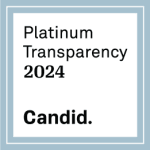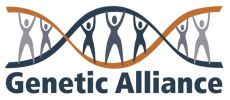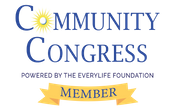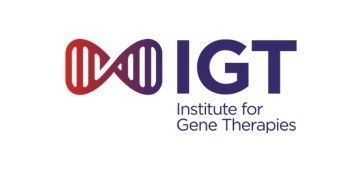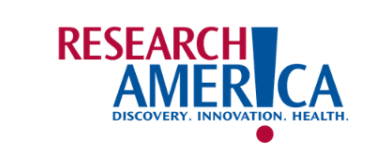Overview
In making any health care decision, each individual and his/her family must consider risks and benefits associated with various courses of action. But generally, one spends most of one’s time and effort thinking about the risk side of that equation: What is the safety profile of the product? How likely am I to experience adverse side effects? What if there is some unknown risk? In serious and life-threatening conditions, the choice to forego treatment itself comes with its own risks – the risks of continued or progressive morbidity and disability in addition to potential severe clinical events and even death. It is well-established that patients living with such chronic serious and life-threatening conditions have a higher tolerance for safety risks, both known and unknown.
But there is another side to all this – the uncertainty of a treatment’s benefit. What if it is not clear exactly what the benefit might be or whether, even if there is positive outcome for some people, it might not occur in all individuals? This is a common situation that is faced in the rare disease community. In most rare disease clinical trials, the number of participants involved simply cannot be large enough to produce the high levels of confidence we all strive to achieve. However, patients have not systematically had the opportunity to provide their preferences around their tolerance for less certainty of treatment benefit.
On March 3, 2021, the Barth Syndrome Foundation (BSF) held a Listening Session with 28 participants from various areas within the U.S. Food and Drug Administration (FDA) (a list of FDA participants and their affiliations is attached) to discuss just this topic. In attendance were representatives from both the Center for Drug Evaluation and Research (CDER) Division of Cardiology and Nephrology and the Division of Rare Diseases and Medical Genetics, as well as representatives from the Center for Biologics Evaluation and Research (CBER). BSF and the global Barth syndrome (BTHS) community requested a meeting, which the FDA welcomed, and then a carefully considered list of specific and highly though-provoking questions for BTHS patients and caregivers to address was created. This provided first-hand accounts of whether and to what degree the BTHS- patient community would be willing to tolerate benefit uncertainty relative to that which is typically demonstrated in more common conditions for which multiple, large studies are able to be conducted.
Background
The meeting began with opening remarks given by Patroula Smpokou, MD (Deputy Director, Division of Rare Diseases and Medical Genetics, CDER, FDA) in which she provided an overview of the regulatory framework that the FDA must implement, and delineated some of the challenges frequently experienced in rare diseases that warrant a tailored approach to applying the standards.
Next, Emily Milligan, MPH (Executive Director, BSF) gave a presentation providing an overview of the BTHS patient experience and the work BSF has done to help facilitate drug development for BTHS. Most of the participants already were familiar with the disease, either from previous meetings at the FDA or as the result of the externally led Patient Focused Drug Development (EL-PFDD) meeting held by BSF in 2018 (at which 25% of the world’s living Barth syndrome population participated). However, it was important to provide a foundation for all FDA participants to remind them of the serious and life-threatening nature of BTHS, as well as the dire unmet medical need our patients face:
- Barth syndrome (BTHS) is an X-linked, serious, life-threatening, complex mitochondrial disease which takes the lives of too many children and young people and which significantly reduces the quality of life for those who survive
- There are currently only about 130 affected individuals living in the U.S. and a total of just over 250 worldwide
- Major manifestations of the disease include cardiomyopathy, neutropenia, extreme fatigue, skeletal muscle hypoplasia, and growth delay
- Cardiac issues are the predominant cause of death
- About 17% of individuals living with BTHS have had a heart transplant
- There currently are NO approved treatments for the disorder
- At our 2018 EL-PFDD meeting, a survey question was asked about what the patients and caregivers would rank as most positive impacts from a potential new Barth syndrome treatment. The top five were:
- Reduce fatigue (70% respondents)
- Improve muscle strength (64% respondents)
- Improve cardiac function/reduce arrythmias (56% respondents)
- Reduce neutropenia/risk of infection (53% respondents)
- Lengthen life expectancy (48% respondents)
More information about what it is like to live with BTHS, including impacts on day-to-day life, as well as the adequacy (or inadequacy) of existing non-specific approaches to treatment can be found in the Voice of the Patient report that resulted from the EL-PFDD.
BTHS Patient and Caregiver Testimonies
The next segment of the meeting included personal testimonies from five BTHS patients and caregivers in which they briefly described their personal experiences and also broached the subject of what they would tolerate in terms of uncertainty of benefit in any potential treatment. The five individuals who spoke were:
- Shelley B. – mother of two BTHS sons, both of whom are deceased, one at age 4 and the other at age 23 while waiting for a heart transplant
- Erin S. – mother of 13-year-old BTHS son
- Kevin B. – 32-year-old affected BTHS individual who has suffered 7 cardiac arrests
- Josanne A. – mother of two BTHS sons, one of whom is 5 years old and had a heart transplant at age 6 weeks and the other who is 14 years old
- Andrew B. – 31-year-old affected BTHS individual who had a heart transplant at age 24
Several common themes provided context for a tolerance of less certainty:
- People with Barth syndrome live with a great deal of uncertainty of what negative and potentially dire circumstances each and every single day will bring. There is no choice but to be tolerant of it.
- Many BTHS patients already have participated in research studies. They know that if they do not, there is no one else who can do so because the community is a small one. They understand that there are no guarantees of personal benefit, but they know that research studies are the way advances are made.
- Those who have received a heart transplant are extremely grateful for that gift. At the same time, however, they realize that heart transplantation does not solve all aspects of BTHS and requires trading one set of issues for others.
- Not everyone who needs one receives a heart transplant, and, for them, one thing is certain: ultimate cardiac-related mortality. Something that provides even the smallest chance that this outcome could be delayed, however uncertain, would be accepted.
Discussion of Thought-Provoking Questions about Tolerance for Uncertainty of Benefit
The balance of the meeting was reserved for discussion of the seven highly thought-provoking questions that had been posed by the FDA and refined by BSF to address the issue of patients’ and caregivers’ tolerance for uncertainty of benefit from a potential treatment. A total of ten BTHS discussants participated – the five testimony presenters listed above, as well as five additional patients and caregivers from the Barth syndrome community:
- Darryl B. – 39-year-old affected individual, who additionally was a caregiver to a younger brother who died from BTHS at age 25 and who also has a number of other affected individuals in his greater family
- Jasmine C. – mother of a 4-year-old affected BTHS son
- Brandi D. – mother of a 5-year-old affected BTHS son
- Kate M. – mother of an affected BTHS son who died at age 28 from sepsis
- Marc S. – father of an affected BTHS son who died at age 12 from sudden cardiac death
James Valentine, JD, MHS (BSF’s regulatory advisor from Hyman, Phelps & McNamara, who also moderated the Barth Syndrome EL-PFDD meeting and has been recognized as a RARE Champion of Hope for his advocacy efforts on behalf of rare disease patients) moderated the discussion that followed.
Questions and Answers:
In short, the specific questions posed and the responses given by the 10 BTHS patients and caregiver participants were:
1. If a drug were approved for Barth syndrome, and it had never been studied in patients [only in animals], how likely would you be to use it?
| A. Very likely | 2 | |||
| B. Somewhat likely | 6 | |||
| C. Unsure | 1 | |||
| D. Somewhat unlikely | 0 | |||
| E. Very unlikely | 1 |
2. If a treatment were approved for Barth syndrome, and [studies showed significant positive benefits, such as keeping patients out of the hospital more] but there was some uncertainty regarding how it impacts long-term survival, how likely would you be to use it?
| A. Very likely | 4 | |||
| B. Somewhat likely | 5 | |||
| C. Unsure | 1 | |||
| D. Somewhat unlikley | 0 | |||
| E. Very unlikely | 0 |
3. If a treatment were approved for Barth syndrome, and [studies demonstrated that the treatment made patients feel better but we do] not know with certainty if there is an increased chance of death or number of hospitalizations if you use the treatment, how likely would you be to use it?
| A. Very likely | 3 | |||
| B. Somewhat likely | 4 | |||
| C. Unsure | 2 | |||
| D. Somewhat unlikely | 1 | |||
| E. Very unlikely | 0 |
4. “Feeling better” is valid evidence that a treatment has an effect, [but] even if a patient is “feeling better,” there may still be unknowns about side effects or other adverse consequences of a treatment. In light of possible but currently unknown risks, how big of an improvement would you need to see in order to consider using a treatment?
| A. If lab tests showed a benefit, even if patients and caregivers did not notice “feeling better,” that would be acceptable to outweigh the unknown side effects of taking the treatment | 5 | |||
| B. The benefit in “feeling better” would need to be at least noticeable to patients or caregivers to outweigh the uncertainty of taking the treatment | 5 | |||
| C. The benefit in “feeling better” would need to be fully satisfactory to outweigh the unknown side effects of taking the treatment | 0 | |||
| D. There is no benefit in “feeling better” that would outweigh the unknown side effects of taking the treatment | 0 |
5. For common diseases, regulators can be very confident that a drug works (by doing several large trials) and have a very good idea of the magnitude of that benefit. This is simply impossible for a rare disease, like Barth syndrome. How sure should you be that a treatment is effective before you use it?
| A. The least amount of certainty allowed, because the need is great | 5 | |||
| B. Less certainty than expected for an approved treatment for a common disease, but as sure as possible | 5 | |||
| C. The same certainty expected for an approved treatment for a common Disease | 0 |
6. [Even after one drug study], another study might allow us to have greater certainty that a treatment is safe and effective. To do this, patients would need to participate in these further studies, where for some time, they do not receive the drug under study (for example, they would be on placebo). How willing are you to participate in such studies?
| A. Sign me up! | 7 | |||
| B. I would want to learn more to inform my decision; maybe | 3 | |||
| C. Absolutely not | 0 |
7. In many cases, knowledge of how a rare disease progresses in affected individuals over time is very limited. In these circumstances [and if there are no approved drugs], a control group [treated with a placebo or no treatment] is needed during the trial (concurrently) in order to make comparisons to determine what effect is attributable to the drug and not variability in the disease itself. How likely are you to enroll in a clinical trial if there were a chance you would be randomly assigned to a control group?
| A. Very likely | 6 | |||
| B. Somewhat likely | 4 | |||
| C. Unsure | 0 | |||
| D. Somewhat unlikely | 0 | |||
| E. Very unlikely | 0 |
As important as these tallies themselves are, the explanations given by the BTHS patient and caregiver participants as to why they may be more tolerant of less certainty when it comes to a potential treatment’s benefit are equally critical.
Common themes that emerged around tolerance for uncertainty of benefit
- Barth syndrome itself means living with constant uncertainty.
- A caregiver articulated, “We live with a disease in which long-term survival is unknown. Your child may be considered among the ‘lucky’ ones with mild symptoms today and gone tomorrow” [like his son].
- A parent of a deceased affected son said that they had lived with incredible uncertainty of many kinds every single day.
- “Barth syndrome is unpredictable and merciless,” described one mother. “There is no certainty with Barth syndrome.”
- No clinical benefit is ever guaranteed, but patients want to have the option to try something that provides some chance of benefit.
- A patient said that his willingness to try a treatment is strong, because “I want to live.”
- Another patient stated that he “would need a 50-50 chance of quality of life improvements in order to try a new treatment.”
- A mother explained that life with BTHS is difficult and patients really want something to try that might help. “How would we know what would be beneficial if we don’t try?”
- Another parent said “The need is great. With an ultra-rare disease like BTHS, there will never be a high degree of confidence as to whether a treatment works or doesn’t work. If there is sufficient evidence that a drug is relatively safe, we need to allow patients and their families the ability to choose to try something.”
- A mother said that current treatments are not disease specific; “they only address specific symptoms and do nothing for disease progression.”
- One patient said that he is “lucky to have had doctors who are on the cutting edge as far as cardiac medications go…. I’ve always been willing to try something new that my doctor recommends to see if it will improve my quality of life.”
- The need for a treatment sooner, even if it comes with greater uncertainty, is warranted because day-to-day quality of life really matters
- “Quality of life is huge,” articulated one parent of a deceased child. “These kids’ minds are unaffected; they have amazing potential to be contributing members of society if given the chance. They just need something to help them feel better in order to function and reach their potential. For many it is not a lot. They just need to be able to have more of their good days and not crashes. To be able to attend school. To be able to get through a day without needing rest. To be able to participate in a chess tournament…”
- One patient would be willing to try a treatment that had a significant impact on his day-to-day life such that he was not as fatigued and could be more productive or enjoy more of life. “If it could result in another day a week that I could work, spend time with my girlfriend, or do something that I otherwise could not, then I certainly would consider trying the treatment.”
- A caregiver said that her son spent more than a year and a half of his life in the hospital, if you add up all the overnight stays (including many nights in the ICU). So being out of the hospital would have been a big deal for him. “It would have meant more days of regular life, better quality of life, less danger (as hospitals are scary places for immunocompromised people).”
- A mother said that even if she and her son could not perceive the benefit of a new drug themselves, improvement in a lab test would be enough for them to use the treatment. She said that especially with cardiac struggles, lab results can be very important to her son’s longevity and that improvements in them might buy them some time to wait for alternative therapies. She believes that if lab results showed benefit, there would be some improvement in quality of life at some point. That would be a “win-win,” and they would absolutely try it.
- Patients and caregivers would be willing to try a drug that might result in an improved quality of life even if the benefit is uncertain or, notably, even when it might be at the expense of a longer life.
- One mother said that on occasion her deceased son told her that he knew that his life would be shorter than most but that he really wanted to get the most out of it that he could. “I truly believe [my son] would have traded an improved quality of life, especially in significant ways like keeping him out of the hospital, for a longer life. And if the notion of a shorter life were only a possibility, then I know he would have made that tradeoff. He lived with great uncertainty every day.”
- A patient explained that “Reduction of the chance of death is not the necessary end point, nor is extending life expectancy. I think the question is how much of an improvement I personally could expect versus the risk, but I would appreciate the opportunity to make that decision.”
- A different patient said, “If a drug had short-term benefits, its effect on long-term survival would be less important. I would even consider a drug that had a negative effect on long term survival.”
- Another parent said that life with BTHS is hard and there is much her son cannot do. “If we could give him a drug/treatment that would give him 35 amazing years of life rather than 60 years of hard life, I think we would want those 35 amazing years. Quality of life is definitely important for us.”
- Another mother stated that her deceased son “never measured his life by days but by what he did in the days he had.”
- If progress is going to be made toward treatments for Barth syndrome, we must participate in research.
- Several caregivers explained that Barth syndrome individuals and families are a small community which means there is a small number of potential participants. They understand that “if we don’t take part in these possibilities, we will not find a cure or treatments.” Another expressed that her family has come to appreciate research “as being their responsibility, not someone else’s.”
- An adult patient said that “he has participated in every clinical study and trial he could in the hopes of bettering our knowledge of the condition.”
- A mother said she would have to analyze the many factors of the trial including the type of trial, her son’s health status at the time, and the knowns and unknowns. But trials are needed for progress in finding a treatment or care, so she would always consider having her son take part.
- Another parent explained that they have always wanted to participate in any study that would possibly further a treatment for BTHS but that some of the study requirements seemed overwhelming when her son was younger. Their mindset has changed over the last few years, however, as he has gotten older. They understand the severity of BTHS without treatment, and they know that participation is key in learning about new drugs. With maturity, her son feels more confident in participating, despite the requirements. They say this even while understanding that he might be assigned to a control group and would take a placebo for some time.
- There is risk in NOT trying a new possible treatment
- A caregiver commented that if a drug demonstrated that a patient would feel better with an unknown chance of death or hospitalization, their family would be somewhat likely to consider it. “The worry, of course, is death or hospitalization, but if we declined trying it, I would have thoughts of regret to what the benefit for quality of life could be. ‘Feeling better’ would improve her son’s quality of life. Without any treatment, everyday her son is at risk of it being his last, and therefore trying a treatment that could possibly improve his life without knowing if there is an increased chance of death would at least give him a chance rather than no chance at all.”
- One mother explained, “When we were told by [her son’s] doctors that a heart transplant was his only chance of survival, the conversation that followed about the risk involved didn’t change our minds; the chance of survival was the only driving factor in our decision.”
- The ultimate decision to participate in a trial or to try a new treatment would involve individual risk/benefit analysis that would depend on the particulars of the patient’s age and condition.
- A parent said that she was not likely to try an animal-tested only therapy at this point, given the potential safety risks and possible limited benefits when translating into humans. Her son is young and doing relatively well, but they see the unkind disease progression of BTHS, so she anticipates that her response would likely move higher up the list to 'very likely' at some point. She is not sure when that point would come, but without other therapy options, she knows it would. “Only treating the symptoms is simply not enough.”
- One patient said “I’d be almost certain to try an oral medication that didn’t mess with my current drug regimen... Even if a drug did, I’d still consider it if it was had a good chance to make me feel better.”
- An affected adult said that he had participated in numerous studies for BTHS pretransplant, and he is ready and willing to participate in more. He understands that because drug interactions are unknown, it is unlikely that he will be able to participate in new drug trials due to his heart transplant because of the risk of interaction leading to rejection or otherwise interfering with the transplant drugs. Absent these risks and exclusion factors, however, he would participate.
Summary/Conclusions
Kate McCurdy (Co-Founder of BSF and current BSF Board Chair) concluded the meeting by summarizing some of the takeaways and reiterating several points that had been made.
-
The Barth syndrome community fully understands and completely concurs with a comment made by Dr. Norman Stockbridge (Director, Division of Cardiology and Nephrology, CDER, FDA) during the meeting that not all approved drugs work for everyone. Yet we know that drugs are approved even with this uncertainty. She pointed out that, by her records, her son tried 92 different mediations (79 of which were prescriptions drugs) during his 28-year life, and they surely did not all give him benefit. If they didn’t work, he would move on, but he was very accustomed to that kind of uncertainty and would keep trying new approaches to see what might help him.
-
She emphasized a point made by one of the discussants in slightly different words: that our community is very concerned about the possible commission of a Type 2 error, also known as a false negative conclusion, in which a drug really works but it is concluded that it doesn’t. It would be a tragedy to let a relatively safe, potentially very helpful medication for an ultra-rare disease with no treatments pass by just because the data could not provide confidence levels on a par with those for common diseases. The patients should be given a choice as to whether or not they want to try such a treatment to see if it offers them any benefit.
-
Representatives of the Barth syndrome community conveyed the following messages:
-
There is a dire unmet need for a treatment for our serious and life-threatening ultra-rare disease.
-
We are an informed, thoughtful and engaged patient community who are willing to participate in clinical studies and trials.
-
There is a high tolerance for uncertainty, including uncertainty of treatment benefit.
-
Life itself is a basic human goal, but quality of life also is crucial. Reflecting just how challenging and life-constraining Barth syndrome can be, a number of patients and caregivers even stated that they would choose a better, somewhat shorter life to a much more difficult, longer one.
-
We understand that not everything will work for everyone but there is an eagerness to have treatments to try, given the very bleak alternative.
-
The BTHS community thanks the FDA very much for this opportunity, particularly Chris Melton (Professional Affairs and Stakeholder Engagement Staff, CDER, FDA), Dr. Norman Stockbridge, and Dr. Patroula Smpokou for their partnership in planning this meeting. We are especially grateful for the interesting and truly thought-provoking questions that the FDA posed to us, as well as the time to discuss our patient and caregiver perspectives.
Disclaimer: Discussions in FDA Rare Disease Listening Sessions are informal. All opinions, recommendations, and proposals are unofficial and nonbinding on FDA and all other participants. This report reflects the account of the perspectives of patients and caregivers who participated in the Barth Syndrome Listening Session with the FDA. To the extent possible, the terms used in this summary to describe specific manifestations of Barth syndrome, health effects and impacts, and treatment experiences, reflect those of the participants. This report is not meant to be representative of the views and experiences of the entire Barth syndrome patient population or any specific group of individuals or entities. There may be experiences that are not mentioned in this report.




